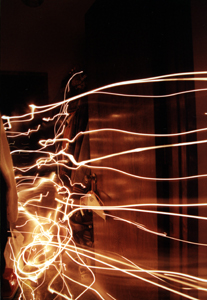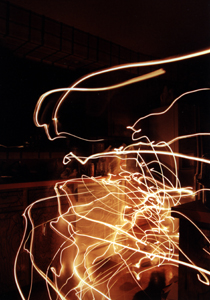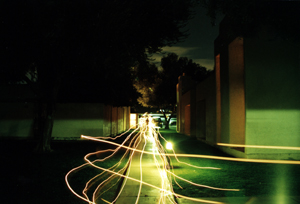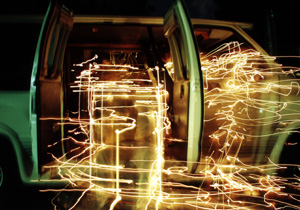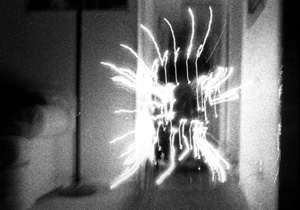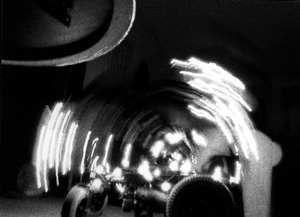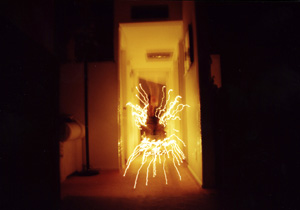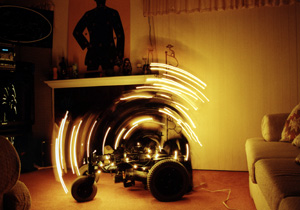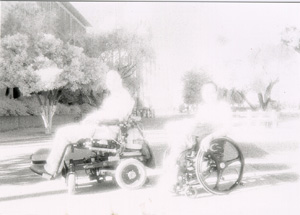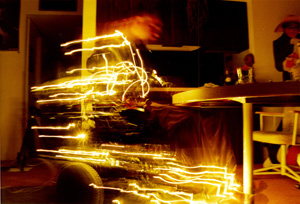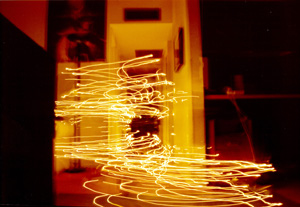Studying Movement Through Light
A C5-6 quad from a diving accident when he was 18, Nevis had a hard time finding a college that would accept him as an architecture student. Building and drawing models by hand are typical activities for architects-in-training, and Nevis has limited use of his hands. Finally, Arizona State University accepted him and agreed to keep a computer in each of his classrooms. He learned the same skills as his classmates, designing and building 3-D models, earning his bachelor’s in 1999 and his master’s in 2001.
While working on his master’s, Nevis became fascinated by how differently wheelchair users and walkers use the same space. Take the average room: “Everything is square,” he says. “Square walls, corners … lots of space people in wheelchairs can’t access. Corners do nothing for us. Doorways … everything has an architecture to it that does not address us.”
But thinking this wasn’t enough. Nevis saw that he had to prove his ideas about space usage. “I had a hard time getting my professors to understand. And I wanted to be understood.” He remembered reading about an architect who took a time-lapse photo of himself drawing a horse with light: The result looked like a horse drawn with a pencil made of fire. “You could actually see the outline of a horse when he was done,” says Nevis, who confesses he can’t remember the architect’s name. “He did this to see how the horse moves. He was the first to do a light study of a subject.”
To prove wheelchair users and walkers use space differently, Nevis conducted his own light study, drafting both his college roommate and fiancée to help him. He had his roommate, Nick Core, wrap white Christmas lights around him and his wheelchair, then wrap more Christmas lights around himself. His girlfriend, Cheryl Fedorchak, then took time-lapse, open-shutter photos of the two moving with the lights turned on.
“It was funny,” says Fedorchak, who also received a master’s in architecture at ASU. “We mostly did the studies in our condo complex, but we did some in other places and got stares from people, just laughing at us.”
The photos depict light outlines of movements made during normal activities–walking, sitting at a table, talking. “I felt like a giant, mobile Christmas tree and Core thought it was the funniest thing he’d ever done,” says Nevis.
Once the photos were developed, Nevis had proof of what he knew all along–a person who walks naturally uses different space than a person who uses a wheelchair. “The wheelchair is a lot lower, it’s continuous, while the human body has more movement, and a lot more energy,” he says. He showed the photos to his professors. “You can talk to them as much as you want to, but as soon as you have a visual representation. … Well, they understand me now.”
